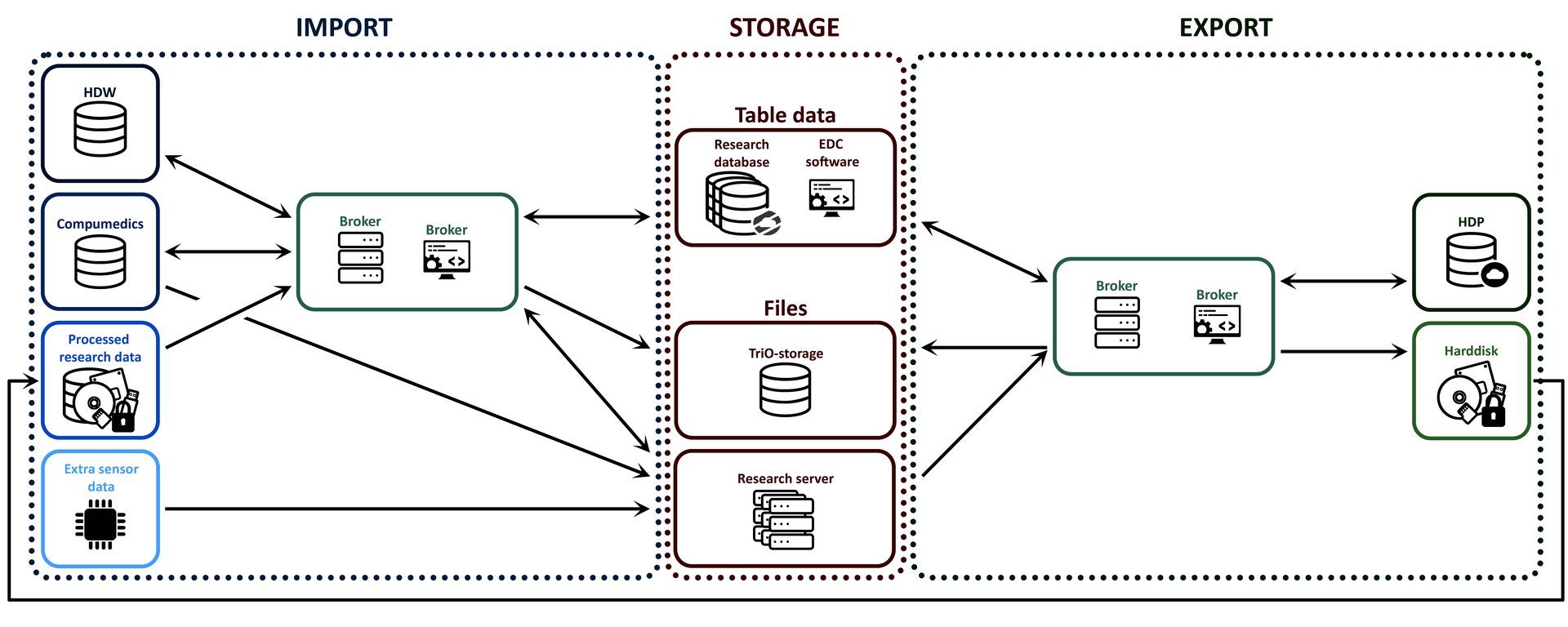
Optimization of the infrastructure and data management of the SOMNIA-database
This design project by Senna Meij, EngD student of Qualified Medical Engineer of the TU/e, covers a design proposal for an optimized infrastructure and data management system to support the growth and increasing use of the SOMNIA database.
The SOMNIA database and infrastructure was built in 2017 in collaboration between expertise center Kempenhaeghe and the TU/e. This database is built to collect, store and share clinical sleep data from Kempenhaeghe patients for scientific research. The goal is to gain new information for clinical diagnoses and treatment and further develop novel and traditional sleep monitoring methods. The sleep data that is collected includes e.g., polysomnografie data, patient data and data from new non-invasive monitoring techniques. With this data e.g. the new non-invasive monitoring techniques can be validates and assessed [1].
Because of the successful use and growth of the SOMNIA database (over 1700 patient records have been included) the optimization of the infrastructure and data management of the database is needed. This EngD project, presents a new design for the data infrastructure and recommendations for the data management.
Starting this project, the current infrastructure and data management were analyzed, the architecture of the infrastructure was documented and the bottlenecks and risks within the current processes were identified. Next, this information was used as input for the requirements of the new design.
Currently, the research data that needs to be collected is stored in multiple sources and databases. It consists of different types of data, such as raw data files and textual data. In combination with the variable addition of novel non-invasive sensors, this caused partly for a relative complex architecture. The improved design of the SOMNIA database contains a central databank and infrastructure to connect the databank to the source locations within Kempenhaeghe in order to collect the research data automatically and to share the data with researchers. To tackle the challenge of the multiple source locations and different data types, the databank consists of multiple storage solutions. The infrastructure further consists of different types of connections to be able to collect the data.
The final design includes a commercially available data management software for all textual data and a storage platform for file data built in-house by Kempenhaeghe. This combination of elements provides the specialized expertise of a purchased system in combination with the flexibility of a self-developed system.
In conclusion, the result of this project proposes a new design for the infrastructure that is more automated and a plan to improve the data management of the clinical sleep data for scientific research within Kempenhaeghe.
[1] M. M. Van Gilst et al., “Protocol of the SOMNIA project: an observational study to create a neurophysiological database for advanced clinical sleep monitoring,” doi: 10.1136/bmjopen-2019-030996.